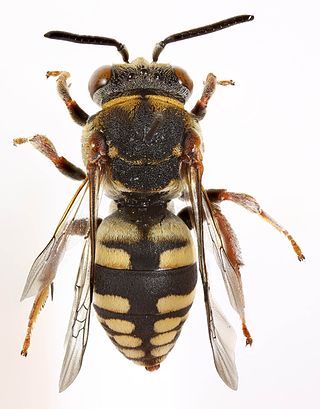
Epeolus cruciger, the red-thighed epeolus, is a species of cuckoo bee from the family Apidae. It is endemic to Europe, where its main host is the common colletes, although other species of Colletes mining bees have been recorded as hosts.

Epeolus is a genus of cuckoo bees in the family Apidae. They are often known as variegated cuckoo-bees. The species is uncommon to rare, and has strong patterns of black and white on the thorax and abdomen. These patterns are made of tiny fat hairs lying flush with the integument or "skin" of the bee. It is easily mistaken for Triepeolus, but is almost always smaller.
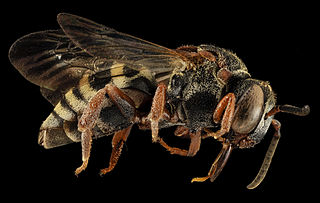
Epeolus scutellaris is a species of cuckoo bee in the family Apidae. It is found in the United States and Mexico.

Epeolus pusillus is a species of cuckoo bee in the family Apidae. It is found in the United States and Mexico. The species is a parasite of Colletes compactus and Colletes ciliatoides.

Epeolus mesillae is a species of cuckoo bee in the family Apidae.
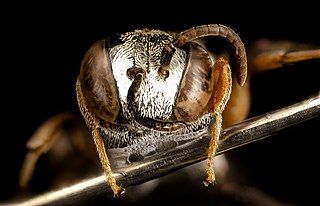
Epeolus howardi, or Howard's cellophane-cuckoo bee, is a species of cuckoo bee in the family Apidae. It is found in North America.
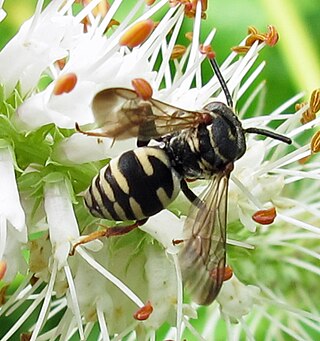
Epeolus canadensis is a species of cuckoo bee in the family Apidae. It is found in North America.
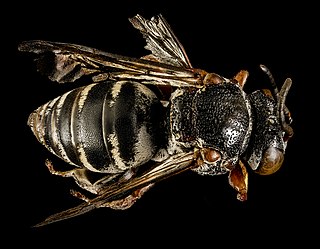
Epeolus lectoides, the cuckoo bee, is a species of cuckoo bee in the family Apidae. It is found in North America. Hosts include Colletes latitarsis and Colletes nudus.
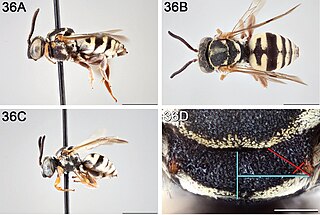
Epeolus compactus is a species of cuckoo bee in the family Apidae. It is found in the United States and Mexico. It is a parasite of Colletes kincaidii, with females laying eggs in the host species' nest.

Epeolus carolinus is a species of cuckoo bee in the family Apidae. It is found in North America.

Triepeolus pectoralis is a species of cuckoo bee in the family Apidae. It is found in North America.
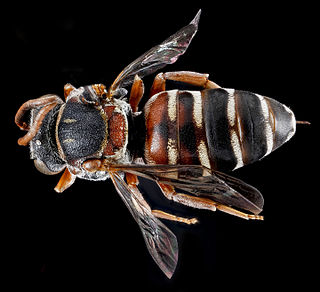
Epeolus zonatus is a species of cuckoo bee in the family Apidae. It is found in North America.

Bombus sonorus, commonly known as the Sonoran bumble bee, is a species of bumble bee in the family Apidae. It is found in Central America and western and southwestern North America. Considered uncommon, it is sometimes categorized as a subspecies of Bombus pensylvanicus.
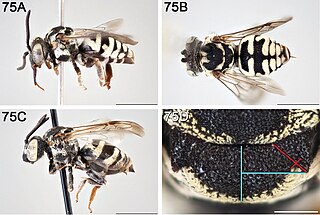
Epeolus olympiellus is a species of cuckoo bee in the family Apidae. It is found in North America.
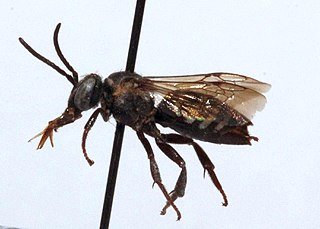
Triepeolus brittaini is a species of cuckoo bee in the family Apidae. It is found in North America.

Bombus californicus, the California bumble bee, is a species of bumble bee in the family Apidae. Bombus californicus is in the subgenus Thoracobombus. It is found in Central America and the western half of North America. Bombus californicus is classified as Vulnerable by the IUCN.

Epeolus autumnalis, the cuckoo bee, is a species of cuckoo bee in the family Apidae. It is found in North America.
Triepeolus grindeliae is a species of cuckoo bee in the family Apidae. It is found in North America.

Epeolus bifasciatus is a species of cuckoo bee in the family Apidae. It is found in Central America and North America. It is a parasite of Colletes latitarsis.
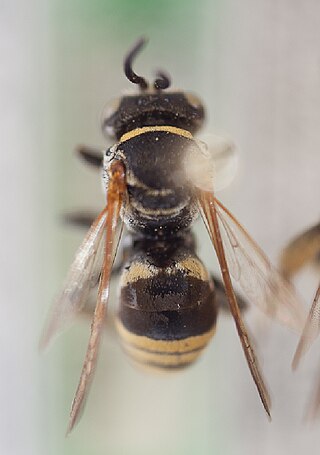
Triepeolus mexicanus is a species of cuckoo bee in the family Apidae. It is found in Central America and North America.



















